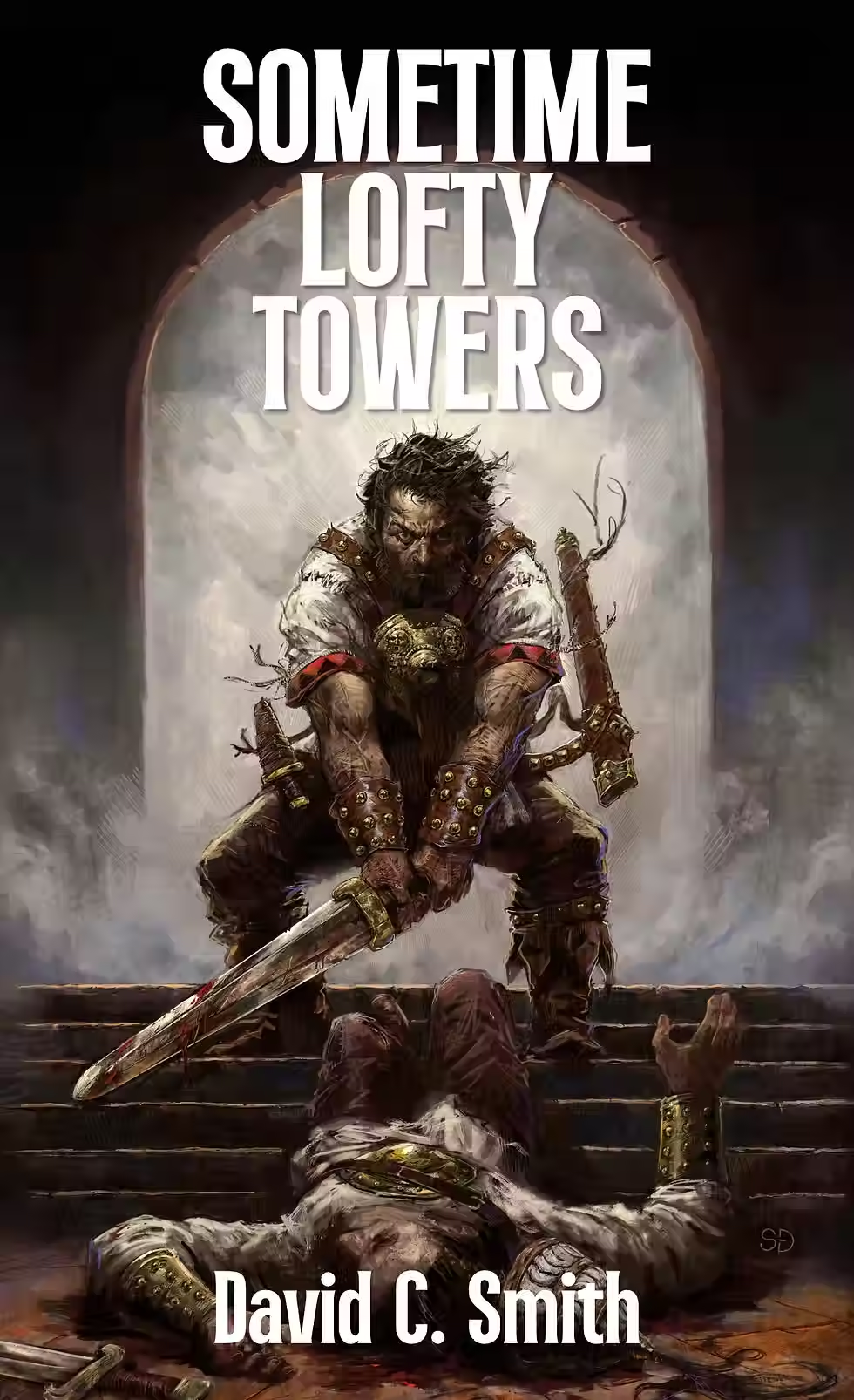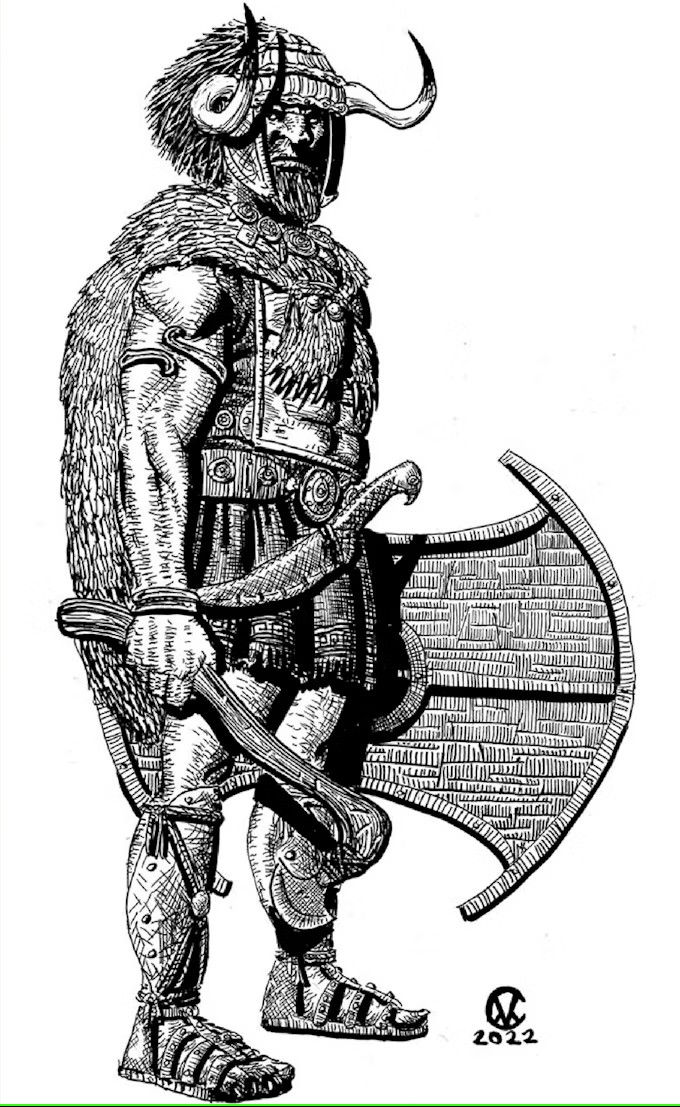Sword & Sorcery Review: Sometime Lofty Towers by David C. Smith
- L. D. Whitney

- Jul 7
- 7 min read
Updated: Jul 28
Greetings Rogues, its a been a fair piece. I took some time away from Social Media for my mental health and to focus of reading, writing, and spending time with my family. Very rarely did I take time to haunt the Discord spaces but one afternoon, much to my surprise, I discovered that I had been asked by Oliver over at NESS to review their current crowdfunding project. I, of course, jumped at the chance.


I consider author David C. Smith as something akin to Sword & Sorcery royalty. I have no real criteria for this, but I can firmly place him beside modern greats like Howard Andrew Jones and John C. Hocking. Smith is perhaps most widely known for his Red Sonja novels, all of which were written before I was born. I've not had the chance to read them, but I've really only heard good things. I personally know Smith's work from his own "Oron" novel, a magnificent work of Sword & Sorcery with Smith's own distinct flavors. I am aware that there are other books in the series, but I do not believe they've had a re-release since the days of spinner racks. I wish that were remedied. In recent years, with the help of Pulp Hero Press, Smith released a collection short stories set in the world of Oron called "Tales of Attluma". The stories here really show off Smith's knack for creative storytelling firmly rooted in the Sword & Sorcery tradtion. Any faithful devotee of the genre would do well to pick up any of these, I am sure.

Which brings me to Smith's latest work, currently a successful if still running crowdfunding endeavor by the good people over at New Edge Sword & Sorcery, titled "Sometime Lofty Towers".
This novel is a strange sort of beast. While it is probably technically a novella or something of that length, because its not all that long, the punk in me rejects the modern insistance that novels must be bricks of dead tree. There is much Sword & Sorcery to be found here, but this is probably the least S&S thing I've read by Smith. Not in content, mind you. But in presentation.
"Towers" eschews the traditional format with which S&S readers may have grown accustomed. This does not, to me, read like something I might find perusing the pulp pages of Weird Tales. The story follows a plot structure that may feel similar to readers who also consume more traditional fantasy novels. What I mean is, this novel doesn't start out with action or a powerful description of a muscle bound barbarian. Instead, it opens on thought provoking conversation and allows readers to immediately be drawn into the characters of the story.
Here too is the crux of Smith's atypical turn from traditional S&S. "Towers" is heavy in philosophical themes and deep ideas. That is not to say that previous S&S works have not splashed some in these waters. Only that I feel Smith has dove to depths I have previously not experienced. Throughout the story, the characters ruminate on their place in the world, moral rights and wrongs, and the nature of change. Likewise, Smith has crafted a critique of Capitalism and Colonialism that seems to me deeply rooted in his own first-hand experiences.
Typically, I ignore a lot of the appendices and additional things in novels. But "Towers" was such a moving piece of literature to me, that I had a deep desire to learn more about why Smith chose to write what he did. The author interview placed at the back the of the book was quite illuminating and intensely personal in places. I highly suggest reading that after you've finished the story.
None of this is to say that the story is preachy or favors moral potificating in lew of S&S action. There is plenty of well wrought and sometimes shocking violence on display within the novel's short length. In fact, the final confrontation with a particular named enemy is perhaps one of the most wonderful and gratifying bits of brutality I've read in S&S. Interesting sorcery also abounds, rearing its awful head in the latter third of the plot. Smith masterfully ties the use of magic to the themes of the story and makes its use appropriately weighty for the genre. Descriptions of magical violence perhaps don't reach the height of Erikson in the Malazan books, but there is enough description balanced expertly with a lack thereof to give the uniquely terrifying imagery that Sword & Sorcery excels at.
Man, I realize I've gotten all the way here and haven't mentioned the plot.
I won't go into much detail, as other reviews have done so already. The plot itself is actually a simple one, at least on the surface. This is pretty par for the course in S&S, which I think is a defining feature of the genre. Sword & Sorcery excels in taking a simple, action oriented plot and dousing it thoroughly in undeniable mystique. "Towers" revolves primarily around a northern barbarian and ex-mercanery named Hanlin. Hanlin has pretty much given up on his life amidst civilization and desires nothing more than to go home. Unfortunately for his plans, he finds himself in the midst of a border war between Lady Sil, a greedy land baron, and a group of indigenous people called the Kirangee. We also meet a number of secondary characters in Hanlin's old companion Thorem, the lady-warrior Ardoden, general Meto, and a number of named characters from the Kirangee. That is not to say that this in an elaborate weaving of characters. The vast majority of the novel is told from Hanlin's perspective, with only a couple PoV scenes from Lady Sil, Thorem, and Meto. All of the characters are interesting and Smith did an excellent job of making the villains hateable.
Many readers may know this already, but I am a Western afficionado. I love a good cowboys and Indians story. Classic, Revisionist, Spaghetti, you name it. I've seen "Towers" referred to as a sort of Clint Eastwood's "Unforgiven" in Sword & Sorcery. I must say, I disagree. There is definitely an air of "Western" about Smith's work and I love it all the more for it. But it is not truly riddled with the grim, fatalist notions that come with Eastwood's "old man's last ride" genre masterpiece. To me, "Towers" reads more like Joe Acercrombie's "Red Country" minus the gallows humor. Likeswise, Hanlin reminds me more of John Wayne's Ethan Edwards in the John Ford masterwork "The Searchers" than he does of Eastwood's Bill Munny. There is a melancholiness to Hanlin, the same sort that one sees in Wayne's iconic icy gaze and the final moment when Ethan Edwards turns his back on home.
All that said, it took me some getting used to the style of "Towers". The beginning third or maybe a little less was interesting but a wee bit slow for my personal tastes. There is a lot of conversation and character building up front that no doubt has its payoffs in the end, but also only a few moments of spectacular action and drama. It is, no doubt, a product of the popular fantasy format and runs contrast to much of S&S at large. This is also a very dark tale, where villains early on take glee in torturing a stray dog and joke about assaulting an orphan's mother. This is much more grim than I am used to and prefer, making some of these bits tough going. They are not, however, simply for shock value. These brief scenes serve to highlight just how little the villains and civilization think of the Kirangee and also their differences from Hanlin's outlook. Once Hanlin leaves the border towns, this sort of display disappears entirely, the focus shifting to the conflict between Sil and the natives. Another minor gripe for me, specifcially on the note of the Western themes and the art: I wish that the interior artist played more into the obvious Native American identity of the Kirangee. I know that Smith said he wanted them to be more generic and has examples to back that up, but the parallels with Western fiction are so in-your-face that I felt the generic barbarian imagery was something of a disservice. Personal tastes, I suppose.
CORRECTION: I was recently informed that the art by Carlos Vera Marquez displayed is NOT the interior art, but simply an example of his work. I'm going to leave my statement for posterity's sake and also to represent my personal tastes, but it is not a valid criticism at this juncture. The finished product will have an entirely new piece.

I hesitate to call this a Magnum Opus for David C. Smith. Not that "Towers" is not worthy of the title, but that I feel there is a sense of finality in the term. I sincerely hope that Smith has more such works loaded in the chamber. "Towers" is perhaps one of the best examples of how the genre of S&S can be stretched into more literary territory without losing what S&S readers love. I particulary applaud adhereing to that shorter "novella" (to use my own unrefined definitions) length so that, even when I thought things a bit slow, the scenes changed relatively quickly. A dedicated reader might finish "Towers" in a couple of hours or three. It's not much more than an old Lancer paperback.
As far as I'm concerned, this is another hit for New Edge Sword & Sorcery. The fact they will be printing this book in the afformentioned Lancer size is another plus.
I've said so much already, I can't think of any final words. If I had to say something, and I think I do, this book will appeal most to S&S readers who are willing to stretch their conception of what an S&S novel can be. That is not to say that typical S&S readers won't dig it, because I think they can and will. But "Sometime Lofty Towers" will surely be lauded as an exemplary piece of genre fiction that toes the line between its escapist fantasy roots and the headier minded themes of literary fiction.






Comments